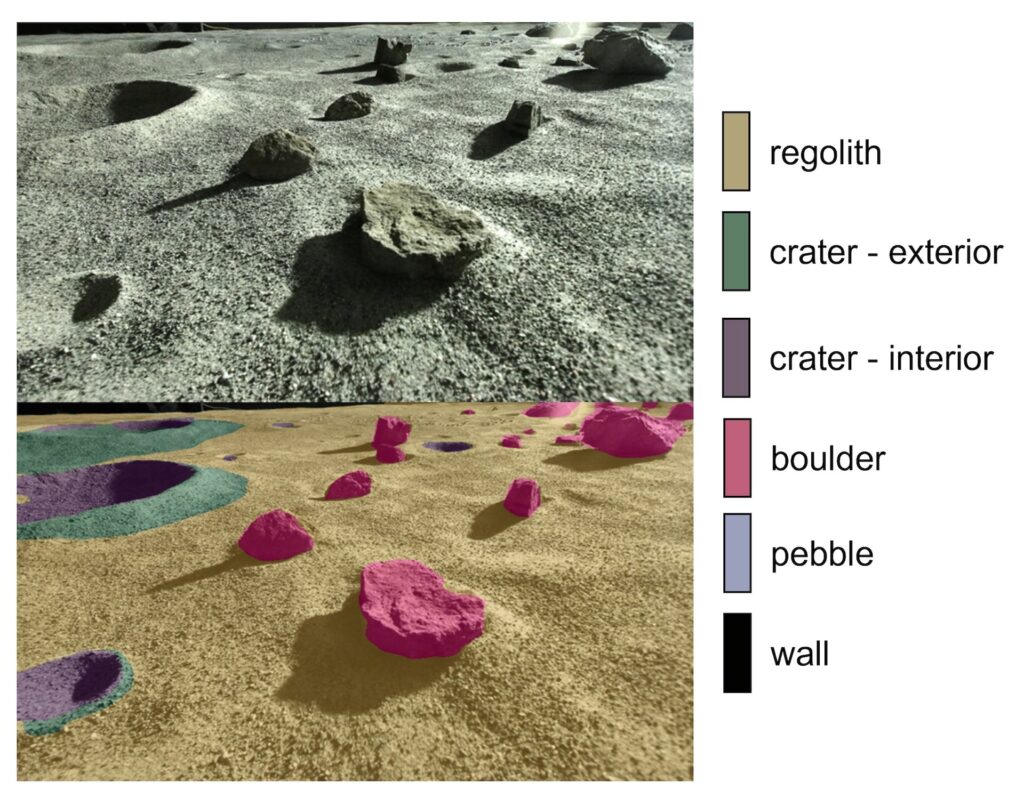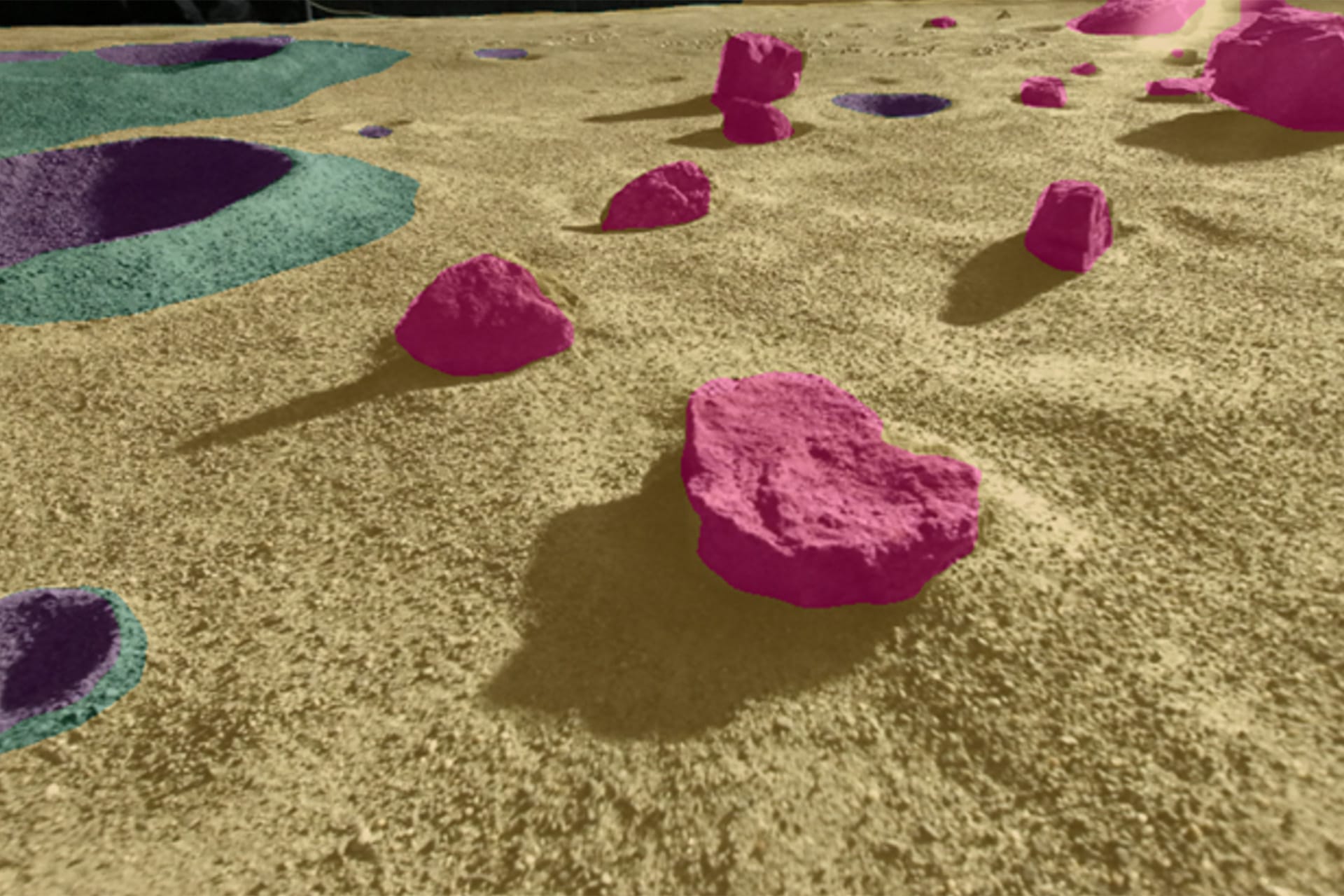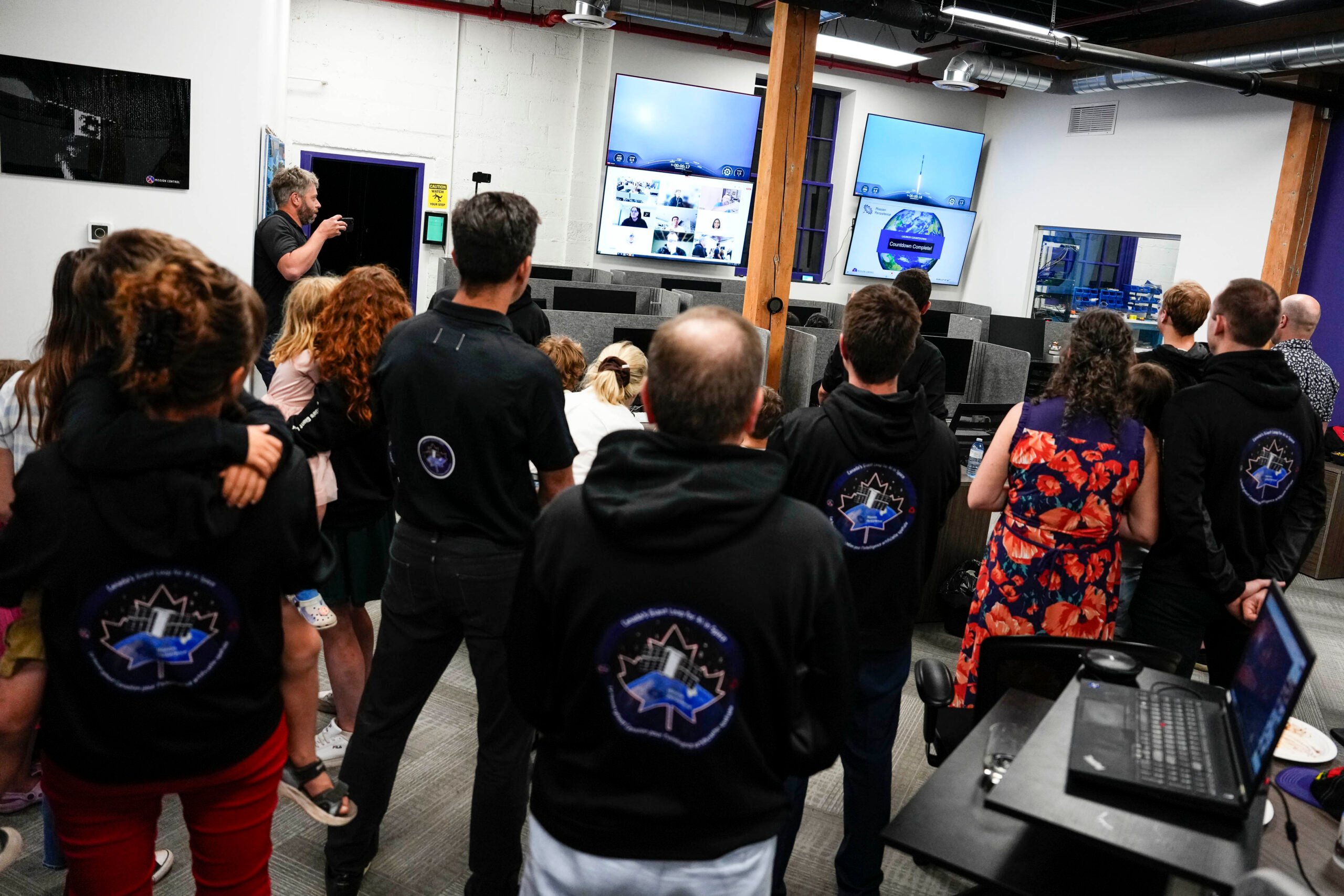Mission Control will demonstrate cutting-edge Artificial Intelligence on the ispace M1 mission, supporting the Emirates Lunar Mission (ELM). Using MoonNet, this first-ever demonstration of Deep Learning beyond Low Earth Orbit (LEO) will unlock new capabilities in science-driven robotic exploration.
ELM is an international micro-rover mission led by the Mohammed Bin Rashid Space Centre in the United Arab Emirates, launched on a SpaceX rocket, and delivered to the Moon by ispace of Japan, on their M1 mission, in 2022.
An example of output from Mission Control’s AI that classifies lunar surface features, using a real image generated at the Mission Control Moonyard.
ADVANCED COMPUTING TECHNOLOGIES
Mission Control and subcontractor, Xiphos Technologies, will operate a modern flight computer as a payload on the ispace lander. The payload will host MoonNet, an Artificial Intelligence (AI) application to classify types of lunar geological features visible in images from Rashid (the ELM rover) as it drives around the lunar surface.
CANADIAN SCIENTIFIC DISCOVERY
As the first demonstration of Deep Learning beyond Low Earth Orbit (LEO), this will be a historic milestone in space exploration. In traditional missions, such analysis would be performed by powerful computers on Earth which is limited by the capabilities of a rover to perform actions such as navigation autonomously.

ENABLING CANADIAN SCIENTIFIC DISCOVERY
The information provided by MoonNet will be transferred back to Earth, where we will use our cloud-based Spacefarer software platform to distribute mission data to our science team in real-time. This will enable the science team to seamlessly and securely interface with data products to support their experiments.
Through this investigation we will demonstrate how automated terrain classification can be used to support engineers and scientists who are operating lunar rovers in a fast-paced working environment. This will include using the identification of geological features to inform operators about potential hazards faced by the rover, and to help operators plan paths for the rover to drive.
By introducing AI technology in an edge-computing architecture for a lunar mission for the first time, we will unlock new capabilities in science-driven robotic exploration.
These research investigations will be led by Mission Control with support from academic partners at Concordia University, University of Winnipeg, Western University, and Carleton University.
FOLLOW US TO THE MOON
Mission Control is pleased to work with a stellar team of partners focused on educational outreach and public engagement, including SmartICE, Rocket Women, and SEDS-Canada (Students for the Exploration and Development of Space). Together, we will engage students, underserved communities, and the wider public in what promises to be one of the first demonstrations of Canadian computing technologies on a lunar mission. By creating iconic moments for Canadian space exploration, we aim to inspire the next generation to reach for the stars.
Follow us on our social media channels to get the latest updates and fly to the Moon with us!






